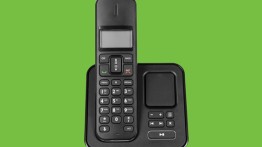COOPERMADE: Wireless Telephones

After witnessing Guglielmo Marconi demonstrate his wireless telegraph transmitter in 1903, William Dubilier ENG'1909 sought to improve the means of circuitry used by Marconi, which required more than 50 Leyden jars (containers for high-voltage electrical charges) to function.
Dubilier invented the mica capacitor, which beyond being more efficient, was much smaller and lighter than the Leyden jars, and could be used to create much smaller electronics. He was only 21 years old when he demonstrated his invention at the Alaska-Yukon-Pacific Exposition, though by then he was probably accustomed to early success. According to one obituary, he was just 14 when he invented a doorknob shocker to thwart burglars.
Dubilier’s demonstration was the first time a voice, not a tapped code, was transmitted through a wireless device. The exposition’s newspaper marveled at his wireless transmitter, declaring that Dubilier’s "demonstration is beyond the words of man to analyze its very 'spook-like' accomplishments…the Radio Wireless Telephone sends the human voice through walls, through glass, through steel, through granite, and, in fact, any substance, without connecting wires of any description."
He went on to found the Dubilier Condenser Corporation of New York where he expanded his work on capacitors, which store electrical energy, eventually earning more than 355 patents. He developed wireless communications for Britain and France during World War I for which he was named a Chevalier of the French Legion of Honor. In 1955, The Cooper Union presented him with the first Gano Dunn Award, which is given to prominent alumni in engineering, industry, science or finance.





